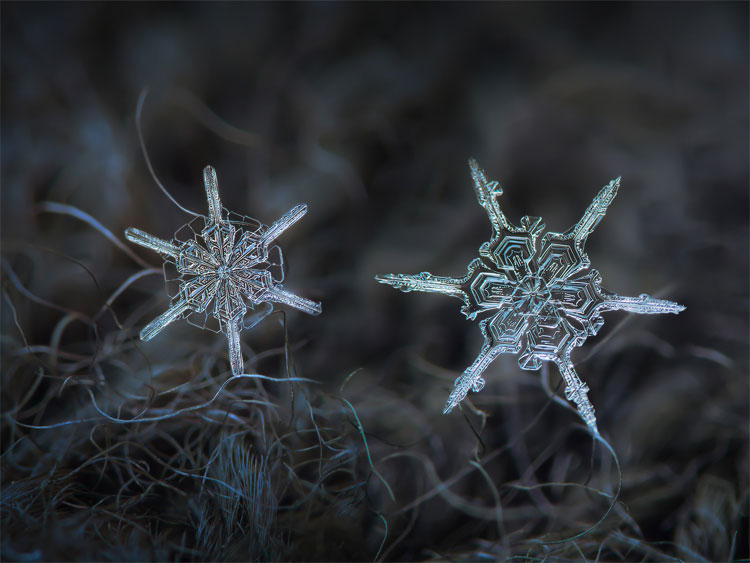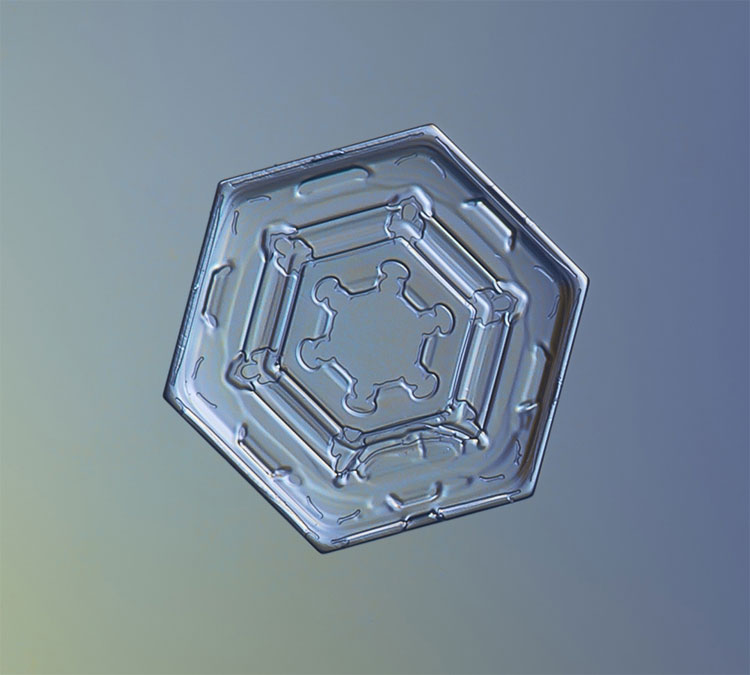Magical beautiful snowflakes
You know snowflakes are often soft, smooth, easy to melt, but do you know they have many types and shapes?
Until now, scientists have found about 108 types of snowflakes: those with branches like spikes or slippery types, ideal for skateboarding or very easy to melt .
According to physicist Kenneth Libbrecht, of the California Institute of Technology, we can divide them into four main types: flat, cylindrical, needle-shaped or tree-shaped.

Snowflakes with many beautiful shapes make people admire them all - (Photo: Alexey Kljatov).
By creating snowflakes in the lab, Libbrecht and other scientists see the key to creating some snowflake shape instead of other shapes because of temperature and humidity.
Snow crystals form when the humidity in the air is so high that it cannot hold any more water. Then the steam condenses into droplets and begins to solidify.
High humidity makes the crystals achieve more complex shapes, in contrast to drier air environments, snowflakes form slowly and produce fewer shapes.
Disk format

Flat disk snowflakes - (Photo: Alexey Kljatov).
With a 6-sided image, a flat and lightweight surface, a disc-shaped form is one of the most common forms of snowflakes. Most snow showers contain a mixture of disk snowflakes and other forms.
Libbrecht divides into two types of conditions to form this snowflake: between -15 o C and -2 o C.
Prismatic form

Prismatic snowflakes - (Photo: Alexey Kljatov).
Cylindrical snowflakes fell on the shoulders of people looking like silver hairs. This type is usually formed in very cold temperatures, making them rarely combine with each other. You can catch them in the snow falling like sand grains.
Needle shape

Snowflake shaped needle - (Photo: Alexey Kljatov).
Despite its simple shape, needle-shaped snowflakes really need a much more complex structure than cylindrical and disc shaped. At not too high humidity, they grow like fish bones with long, slender pillars.
This structure helps snowflakes to bond together, so when they fall to the ground, they form a perfect plane for skiing or ideal for making snowballs.
Tree shape

Tree-shaped snowflakes - (Photo: Alexey Kljatov).
The secret key to the formation of tree snowflakes is the high air humidity, which makes the steam condense faster and the ice crystals branch more.
Because this snowflake has many branches, they are able to hold the air in the snow piles, creating softness for the snow.
- It takes 25 years for you to admire these beautiful images
- Life cycle of a snowflake
- Picture of beautiful flock of sheep from above
- No two snowflakes are the same
- Strange shapes of snowflakes
- The world exaggerates through a microscope
- The beautiful and incredibly magical moments of the sky
- 26 unbelievably perfect images
- Snow flower: The miraculous creation of nature
- 5 magical lands in world famous legend
- The truth is 'naked' about magical creatures
- The most beautiful magical world in 2015
 'Fine laughs' - Scary and painful torture in ancient times
'Fine laughs' - Scary and painful torture in ancient times The sequence of numbers 142857 of the Egyptian pyramids is known as the strangest number in the world - Why?
The sequence of numbers 142857 of the Egyptian pyramids is known as the strangest number in the world - Why? History of the iron
History of the iron What is alum?
What is alum?